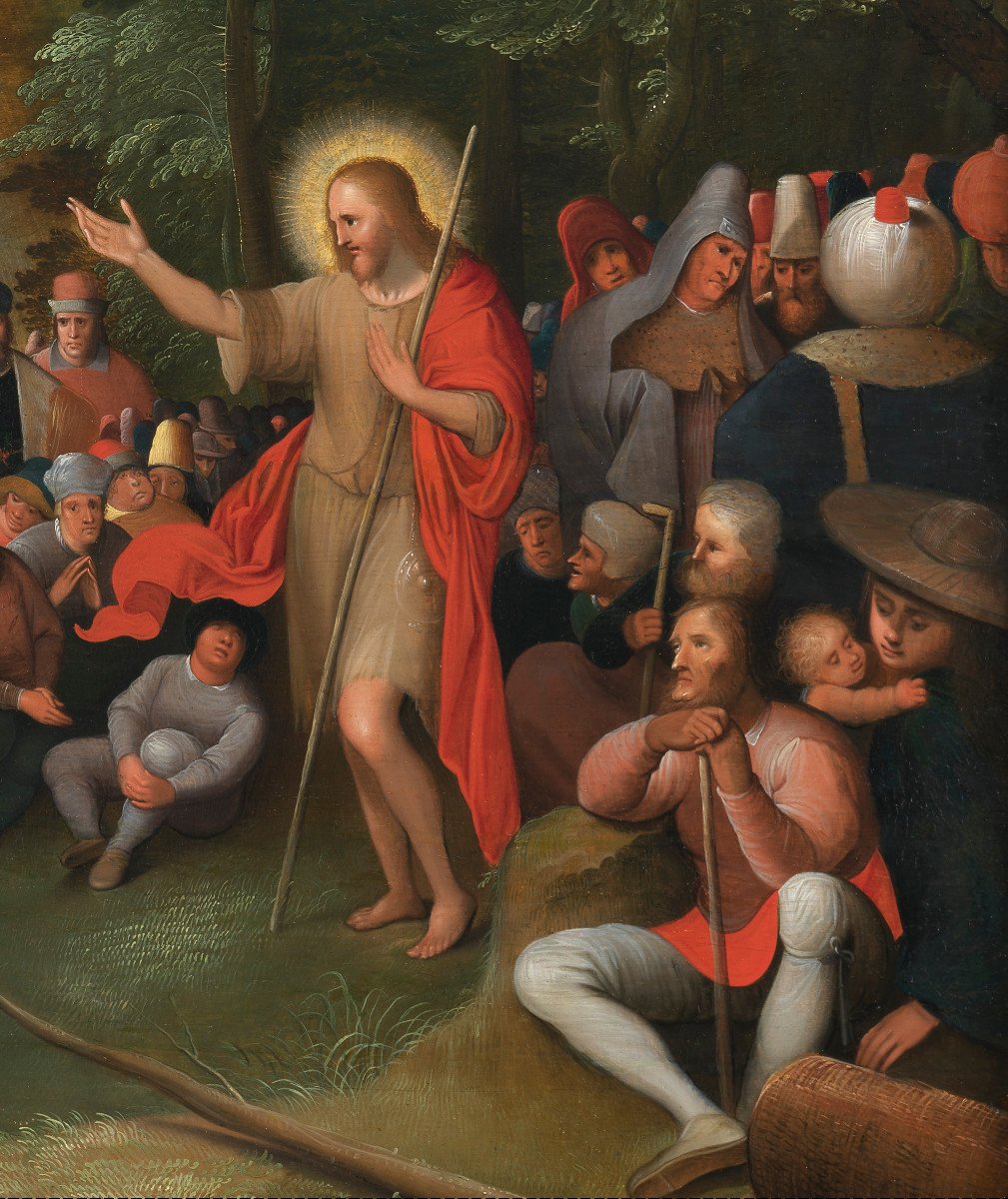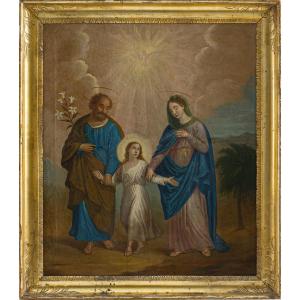Our painting features a representation of Saint John the Baptist preaching before an assembly of the faithful. Gathered in a clearing, whether they are seated, standing or on horseback, they form a compact crowd which articulates in a circle around the preacher. A veritable gallery of portraits, our audience mixes characters of various ages and conditions who adopt very marked attitudes and expressions. Even the horses seem ecstatic!
Jean-Baptiste, haloed in gold, is anchored in an elegant contrapposto. He stretches his arm out in front of him and, in its extension, the threatening sky clears up. Did the painter want to prefigure the imminent arrival of the Messiah?
Matthew, in his Gospel, places the scene in the desert while Luke places it on the banks of the Jordan. And our painter transposes it to the edge of a continental forest, thus demonstrating his talent for painting lush nature. The narrative scenes which show Saint John the Baptist preaching are rare because relegated to the background of the more frequent representations of the baptism of Christ.
The same composition painted on copper (smaller dimensions: 37.8 x 51.4 cm) attributed to Frans II Francken was sold at Christies in October 2000.
Our painting is harmoniously underlined by a gilded wood frame and green rechampi in the style of the frames made in the 17th century in the Marche region of Italy. A cartel at the bottom center.
Dimensions: 66 x 96 cm - 82 x 112.5 cm with the frame
Frans II Francken or Frans Francken the Younger (Antwerp 1581 - Id. 1641). Son of Frans I and brother of Hieronymus II and Ambrosius II, he is the most famous of the Francken dynasty. Excellent in the most diverse genres, he specializes in small and medium format painting (also known as cabinet painting) and that Rubens called the "cose piccole".
He painted numerous biblical, mythological and historical scenes in which he depicted compact crowds according to the rule of isocephaly. Pushing the glazing technique to perfection, he achieves a delicacy of nuances and fluidity effects which give all their interest to the background figures. The greatest Flemish artists call on his talent, we thus find the virtuoso groups of Francken in the landscapes of Abraham Govaerts, Joos de Momper or Jan Brueghel I and II, in the architectures of Bartholomeus van Bassen, Pieter Neeffs I or even Hendrick van Steenwijck to name a few.































 Le Magazine de PROANTIC
Le Magazine de PROANTIC TRÉSORS Magazine
TRÉSORS Magazine Rivista Artiquariato
Rivista Artiquariato
